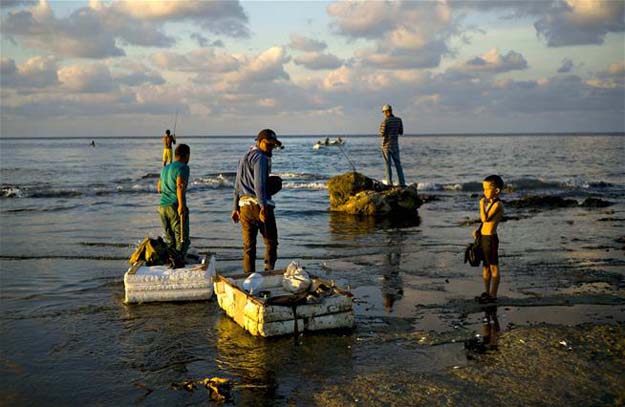Why Cubans Fish With Condoms. The inventive practice makes use of limited resources
By Andrea Rodriguez / Associated Press / November 16, 2016 / Newser
[dropcap]J[/dropcap]uan Luis Rosello sat for three hours on Havana’s Malecon esplanade as the wind blew in from the Florida Straits, pushing the waves hard against the seawall of Havana’s coastal boulevard. As darkness settled and the wind switched direction, Rosello pulled four condoms from a satchel and began to blow them up. When the contraceptives were the size of balloons, the 47-year-old cafeteria worker tied them together by their ends, attached them to the end of a baited fishing line, and set them floating on the tide until they reached the end of his 750-foot line. After six decades under US embargo and Soviet-inspired central planning, Cubans have become masters at finding ingenious solutions with extremely limited resources. Few are as creative as what Havana’s fishermen call “balloon fishing,” a technique employing a few cents worth of condoms to pull fish worth an average month’s salary from the ocean.

Cuban fisherman ties inflated condoms together and attaches them to his fishing line. “Condoms” keep his bait high in the water and increase his line’s resistance. Malecon sea wall, at sunset in Havana, Cuba. Photo Associated Press.
On any given night in Havana, dozens of men can be found “balloon fishing” along the Havana seawall, using their homemade floats to carry their lines as far as 900 feet into the coastal waters, where they also serve to keep the bait high in the water and to increase the line’s resistance against the pull of a bonito or red snapper, the AP reports. “No one can cast the line that far by hand,” said Ivan Muno, 56, who was fishing alongside Rosello. “This is the most effective way to fish,” Rosello said. “Someone got this great idea and I can be here all night with the balloons out.” It’s not clear exactly when the practice was adopted, but according to local fishermen’s lore, the inventor of the balloon technique in Cuba saw a video of South Africans fishing using kites and got the idea for using inflated condoms.
Click for more on the interesting practice . . .
NOTE: Featured Image show fishermen of “Cork Fishing” setting out to sea at Chivo Beach in Havana, Cuba. Industrial styrofoam board waste is a “slightly” unsafe “vessel” to go to sea with. (Associated Press)






